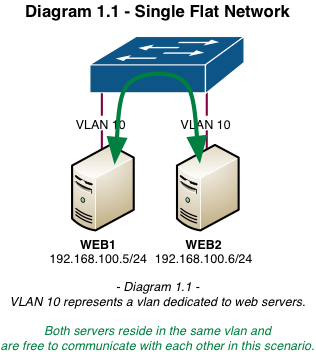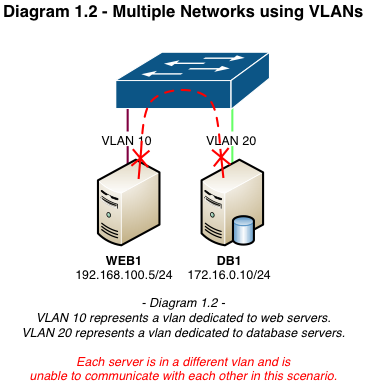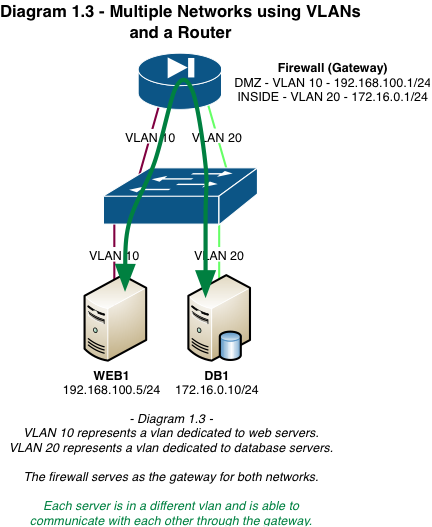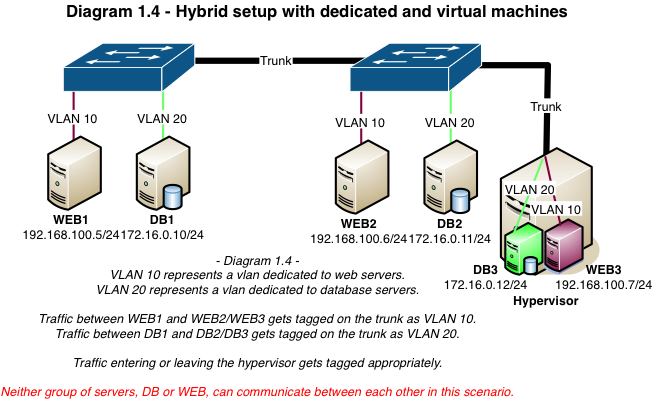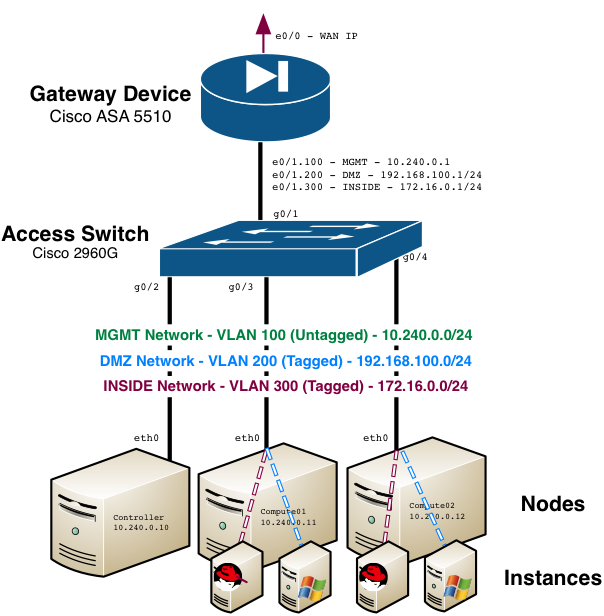我们的云平台使用基于vLan的供应商网络(Provider Networking),看到Rackspace有一篇blog写的比较好,从原理到过程都很详细,转载如下。
In this multi-part blog series I intend to dive into the various components of the OpenStack Neutron project, and to also provide working examples of networking configurations for clouds built with Rackspace Private Cloud powered by OpenStack on Ubuntu 12.04 LTS.
In the previous installment, Neutron Networking: Simple Flat Network, I demonstrated an easy method of providing connectivity to instances using an untagged flat network. In this third installment, I’ll describe how to build multiple provider networks using 802.1q vlan tagging.
Getting Started / VLAN vs Flat Design
One of the negative aspects of a flat network is that it’s one large broadcast domain. Virtual Local Area Networks, or VLANs, aim to solve this problem by creating smaller, more manageable broadcast domains. From a security standpoint, flat networks provide malicious users the potential to see the entire network from a single host.
VLAN segregation is often used in a web hosting environment where there’s one vlan for web servers (DMZ) and another for database servers (INSIDE). Neither network can communicate directly without a routing device to route between them. With proper security mechanisms in place, if a server becomes compromised in the DMZ it does not have the ability to determine or access the resources in the INSIDE vlan.
The diagrams below are examples of traditional flat and vlan-segregated networks:
VLAN Tagging / What is it and how does it work?
At a basic level on a Cisco switch there are two types of switchports: access ports and trunk ports. Switchports configured as access ports are placed into a single vlan and can communicate with other switchports in the same vlan. Switchports configured as trunks allow traffic from multiple vlans to traverse a single interface. The switch adds a tag to the Ethernet frame that contains the corresponding vlan ID as the frame enters the trunk. As the frame exits the trunk on the other side, the vlan tag is stripped and the traffic forwarded to its destination. Common uses of trunk ports include uplinks to other switches and more importantly in our case, hypervisors serving virtual machines from various networks.
VLAN Tagging / How does this apply to Neutron?
In the previous installment I discussed flat networks and their lack of vlan tagging. All hosts in the environment were connected to access ports in the same vlan, thereby allowing hosts and instances to communicate with one another on the same network. VLANs allow us to not only separate host and instance traffic, but to also create multiple networks for instances similar to the DMZ and INSIDE scenarios above.
Neutron allows users to create multiple provider or tenant networks using vlan IDs that correspond to real vlans in the data center. A single OVS bridge can be utilized by multiple provider and tenant networks using different vlan IDs, allowing instances to communicate with other instances across the environment, and also with dedicated servers, firewalls, load balancers and other networking gear on the same Layer 2 vlan.
Networking / Layout
For this installment, a Cisco ASA 5510 will once again serve as the lead gateway device. In fact, I’ll be building upon the configuration already in place from the flat networking demonstration in the previous installment. 10.240.0.0/24 will continue to serve as the management network for hosts and the flat provider network, and two new provider networks will be created:
- VLAN 100 – MGMT – 10.240.0.0/24 (Existing)
- VLAN 200 – DMZ – 192.168.100.0/24 (NEW)
- VLAN 300 – INSIDE – 172.16.0.0/24 (NEW)
A single interface on the servers will be used for both management and provider network connectivity.

